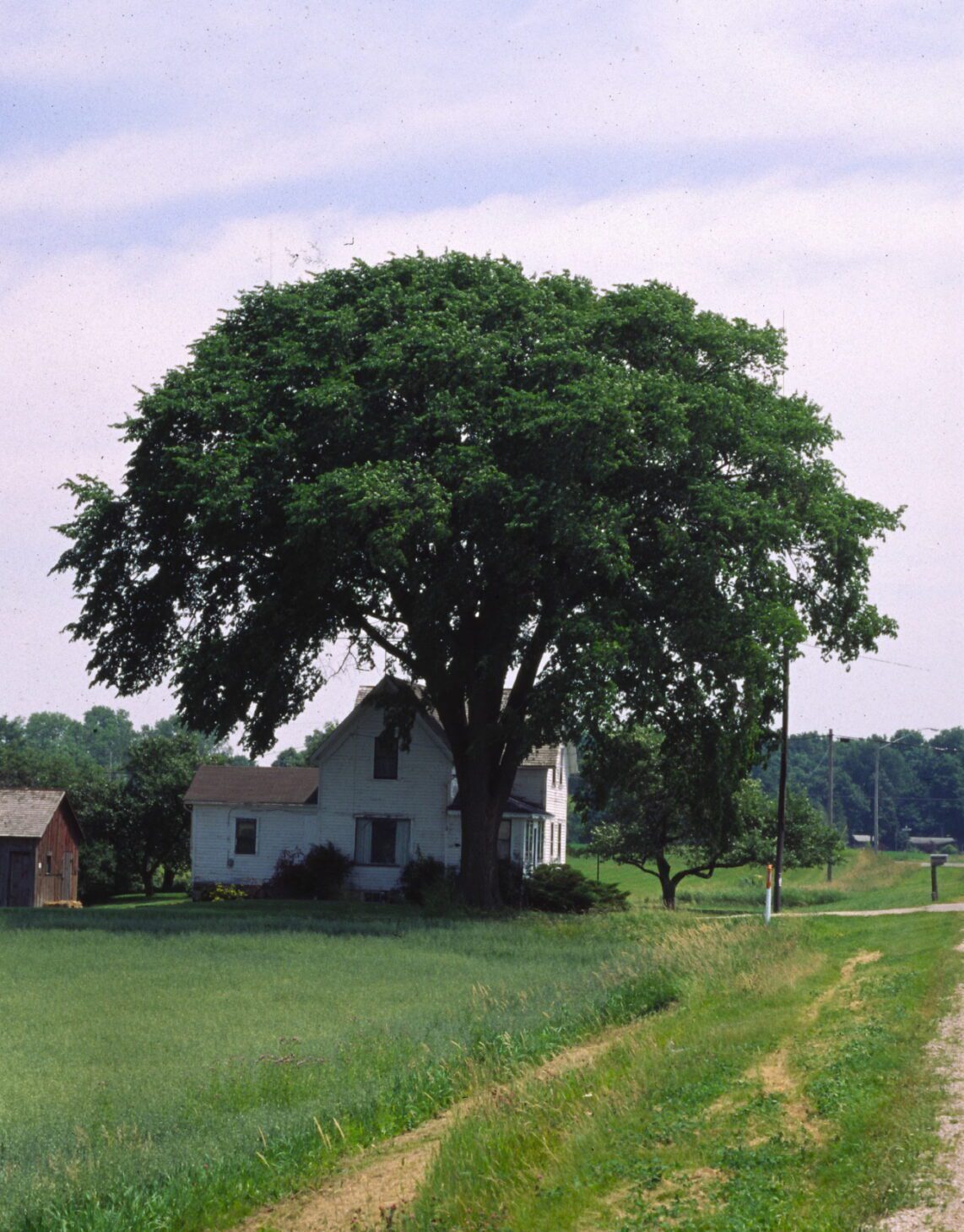The Elm Comeback
Written by: Certified Arborist, Luke Volbrecht
Posted: 2021 | Emerald Ash Borer | Summer
In a time of great loss from Emerald Ash Borer, there is hope for urban tree plantings. Once a distant memory of the past, the opportunity to plant one of the most well adapted trees for growing in urban and suburban conditions has returned.
It is difficult to talk about American Elms without reflecting on their history. To summarize, Elms were frequently planted in the early 20th century. They were both readily available and easy to grow. The resulting over-use of this one type of tree then allowed the non-native fungi, Dutch Elm Disease (DED), to quickly spread and decimate the urban canopy leaving few mature American Elms to tell the tale. Many of the surviving remnant Elms that escaped infection from DED have since been propagated, banking on their genetic to resistance to DED to sustain these new trees. Through hybridization efforts, there are now some exciting cultivars with great DED resistance. A few of my favorite Elm cultivars include ‘Accolade’, ‘Triumph’, and ‘Princeton’ for their high disease resistance and upright form.

The majestic vase shape of a mature elm
Key benefits of Elms:
+ “Easy” to transplant and grow.
+ Adaptable to dry and wet soil conditions.
+ Tolerant of compacted soil and high soil pH.
+ Bird and Pollinator friendly.
+ Fast growing!
Key drawbacks of Elms:
– Varieties are resistant to DED, not immune.
– Fast growing! – also means frequent pruning.
Please note – A hybrid Elm can grow 3 to 6 feet per year under favorable conditions. Elms and other “fast growing” tree species need proper structural pruning annually or every other year while young to maintain strong branch structure. Fast growing trees are much like children and depend on significant guidance in their developmental years in order to turn into fully functioning adults. The pruning needs of an Elm tree should be strongly considered before planting. The first 15 years after planting are the most critical in establishing a tree’s long-term branch structure. Once the structure is defined, the frequency of pruning can relax to intervals of 3 to 4+ years.
Due to its adaptability to almost any site, I consider the Elm tree a true work horse that will always rise to the occasion when given the opportunity. It can be tough as nails and planted in some unfavorable locations where other trees cannot make it. If you are considering a new tree for planting, please contact your Wachtel Tree Science arborist first. With soil sampling and a site assessment, we can select a desirable tree that meets your needs and is best suited for the site!





